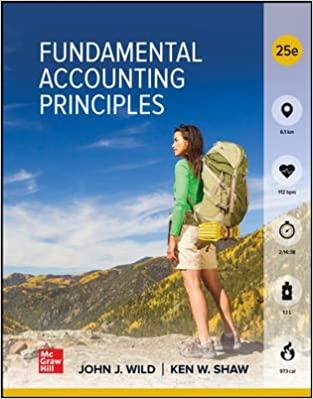Answered step by step
Verified Expert Solution
Question
1 Approved Answer
Bob Moyer of Mile High Cycles has asked you, a member of their Financial Planning and Analysis (FP&A) team, to evaluate the companys results by
Bob Moyer of Mile High Cycles has asked you, a member of their Financial Planning and Analysis (FP&A) team, to evaluate the companys results by comparing actual to expected performance (using variance analysis). I provided every piece of information necessary for this assignment, and am not missing anything.
- First, gain an understanding of the three processes for yourself (frame, wheel, and final assembly). Summarize these processes in your own words, and at the same time identify where within these processes variation could arise leading to variation in costs (this could be variation in a positive or negative way). Opine on the relative amount of variation. [The goal of this section is for you to develop an expectation in your mind, that if you do see variation in the analysis, you have an understanding of what may be causing the variation almost as if you are hypothesizing ahead of time where there is greater likelihood for variation in the companys processes]. This should be done before you do any variance analysis calculations.
- Compute the following variances for Mile High Cycles.

- In addition, assume that Bob Moyer has the following employees at Mile High Cycles:. Floyd Outlandiss, sales manager - responsible for bicycle pricing; sales to customers; timing of customer deliveries; advertising programs; customer complaints. Fitz Matoosh, production manager - responsible for choice of production levels; production scheduling; hiring and firing production employees/supervisors; determining acceptable range for grade of inputs; maintenance of production equipment. Shelly B. Swift, purchasing manager - responsible for choosing vendors; negotiating purchase prices and discounts; timing of purchases; grade of materials purchased (within ranges specified by Fitz). Given the variances you identified, (1) develop a story as to how and why production varied in the way it did from expectations (2) what decisions did Floyd, Fitz, and Shelly make or what actions did they take that lead to these variations and (3) your assessment of their performance in their job roles including a justification of your assessment.




-
You are to submit
- An excel document, using the template provide. On a third excel tab, create a variance analysis using the crown method and using CELL REFERNCES to Exhibit 1 and Exhibit 2.
- A case write up of no more than three typed pages (12 pt Times New Roman, 1.5 spacing). I suggest the following format/ordering for the case write up
-
- 1st: Question 1 (should be done before completing the Variance Analysis)
-
- 2nd: describe the results of your variance analysis for each category
- Sales
- Framing Assembly
- Wheel Assembly
- Final Assembly
- Overhead categories
- 2nd: describe the results of your variance analysis for each category
-
- In your description of each provide your responses to Question 3
- Tip: for example - what happened with this assembly process and why, which of the three employees could have caused this result and how (i.e., by what actions or decisions), and do you think they did well in their role, or if not, how could they have improved their actions/decisions.
- The responses to each of these may be interconnected so you can bridge the categories together as much as you need to, to help tell a cohesive story of what happened within Mile High Cycle during 2004.
- In your description of each provide your responses to Question 3
Step by Step Solution
There are 3 Steps involved in it
Step: 1

Get Instant Access with AI-Powered Solutions
See step-by-step solutions with expert insights and AI powered tools for academic success
Step: 2

Step: 3

Ace Your Homework with AI
Get the answers you need in no time with our AI-driven, step-by-step assistance
Get Started


